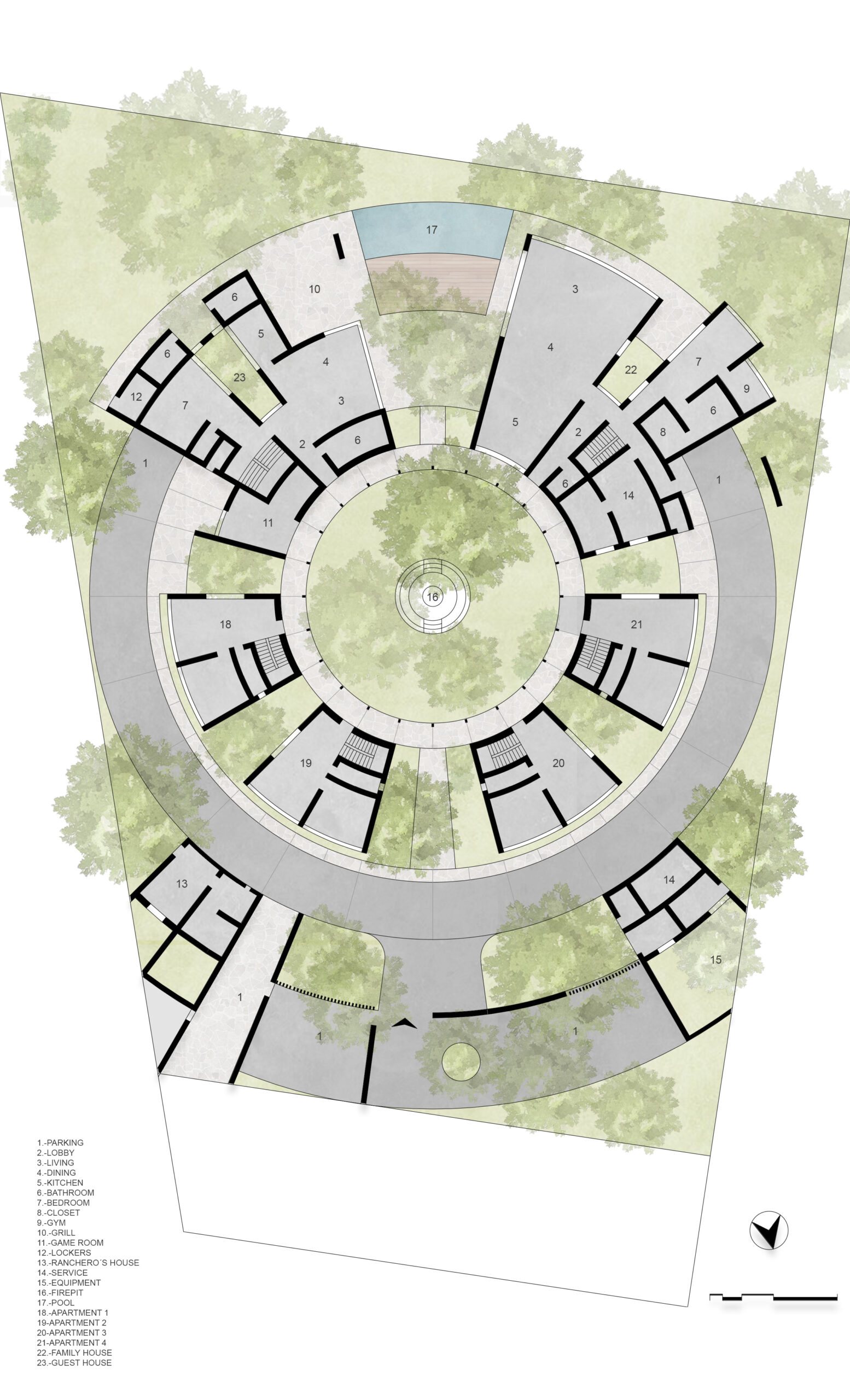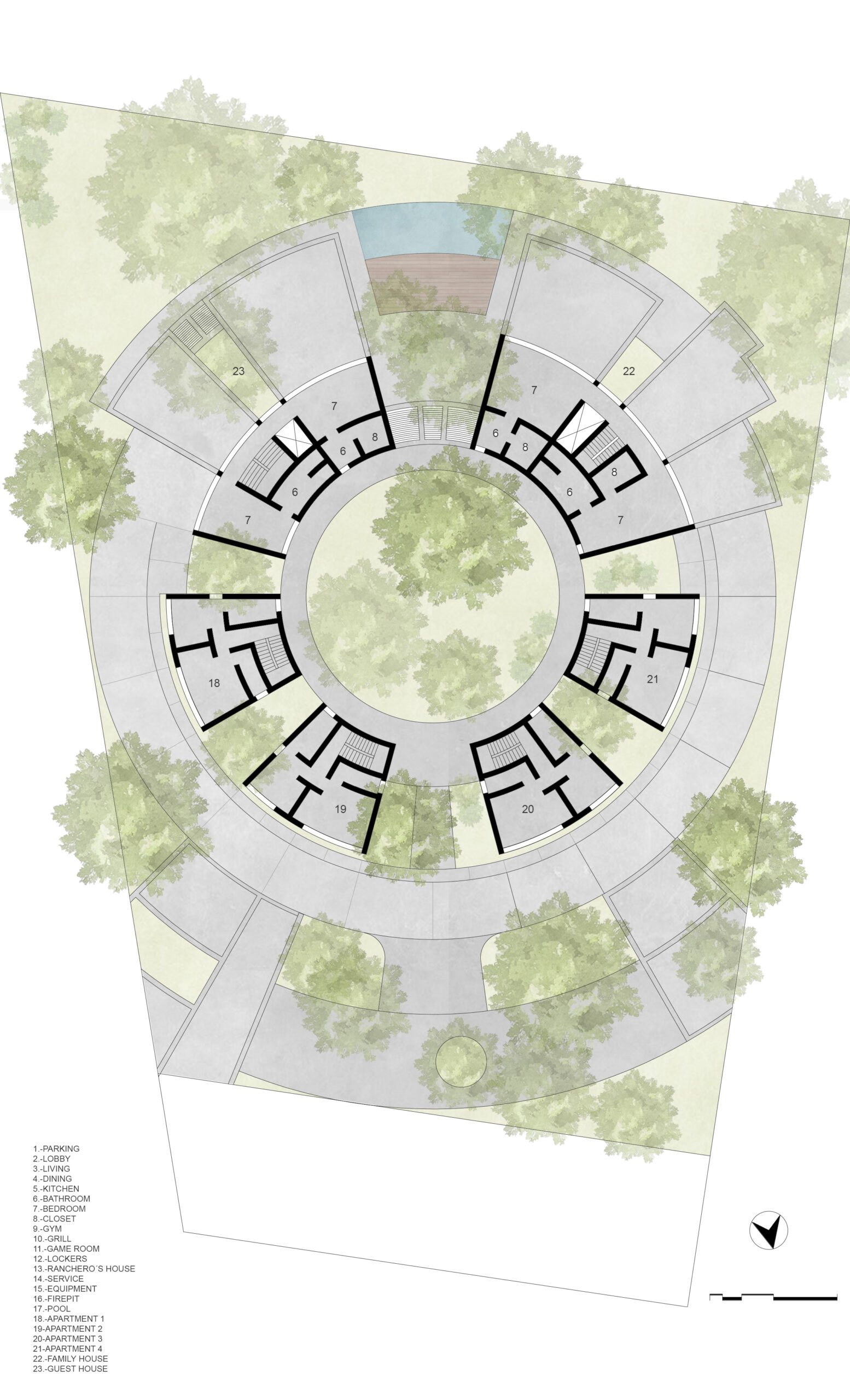July 31, 2023
Hacienda de La Boca flawlessly combines traditional elements with contemporary design.
_project: Hacienda de La Boca
_architecture: Fundamenta Design
_location: Santiago Nuevo León, Mexico
The evolution of communal living and shared living spaces is a captivating narrative that reflects the dynamism of human socio-cultural changes and the central role architecture plays in molding these changes. Over time, as societies have morphed, the concepts of living together and the architectural structures that accommodate these have adapted in response. The Hacienda La Boca project by the architecture office Fundamenta is an excellent contemporary example of this adaptation.
Historically, communal living was a survival strategy. Architecture designed shared dwellings like longhouses or communal huts, promoting group solidarity and shared responsibilities. With time, the architecture of shared living spaces evolved. The Middle Ages, for example, witnessed the emergence of courtyard houses and fortified towns, with architecture fostering interaction, security, and collective identity.
This notion of shared courtyard living has been ingeniously revisited by Fundamenta in the Hacienda La Boca project. They designed a series of distinctive houses, harmoniously organized around a central courtyard, reinterpreting a traditional Spanish hacienda design for the modern age.
The rapid urbanization driven by the Industrial Revolution brought multi-story buildings and dense residential areas, often sidelining communal spaces. However, the 20th century saw a resurgence of interest in shared living spaces, driven by both necessity and ideology. Co-housing communities, for instance, emerged in Denmark, reflecting a shift towards intentional communities based on shared resources and mutual support.
Today, shared living is witnessing a profound shift, manifested in co-living and co-working spaces, shared housing for the elderly, and eco-villages. Architecture's role in these transformations is pivotal, as in the case of Hacienda La Boca. Here, Fundamenta has provided a masterclass in shaping communal living, crafting individual homes around a shared courtyard to balance community interaction with individual privacy.
Architecture now shapes not just physical spaces, but curates social dynamics. Emerging technologies like digital architecture and new materials offer even greater flexibility in designing communal spaces. Fundamenta's use of adaptable design elements such as movable walls and open plan layouts in Hacienda La Boca showcases this perfectly, underscoring how modern architecture can fluidly cater to evolving living needs.
The evolution of communal living highlights architecture's pivotal role in society. As we progress, architecture will continue to influence and respond to our changing communal living and shared space perceptions. Projects like Hacienda La Boca by Fundamenta encapsulate this, showing how architecture can create sustainable, inclusive, and adaptable communities in the modern era.
credits
_written by Daniela Moreira Silva
_film by Architecture Hunter & Mavix
_cover image by Jorge Taboada
_drawings by Fundamenta Design:



You’ve prove to be a great hunter. Now that you have reached the bottom, maybe it’s time to know us more.